Easy vegan sheet pan honey mustard tempeh and vegetables. This one-pan plant-based meal is high protein and perfect for meal prep!
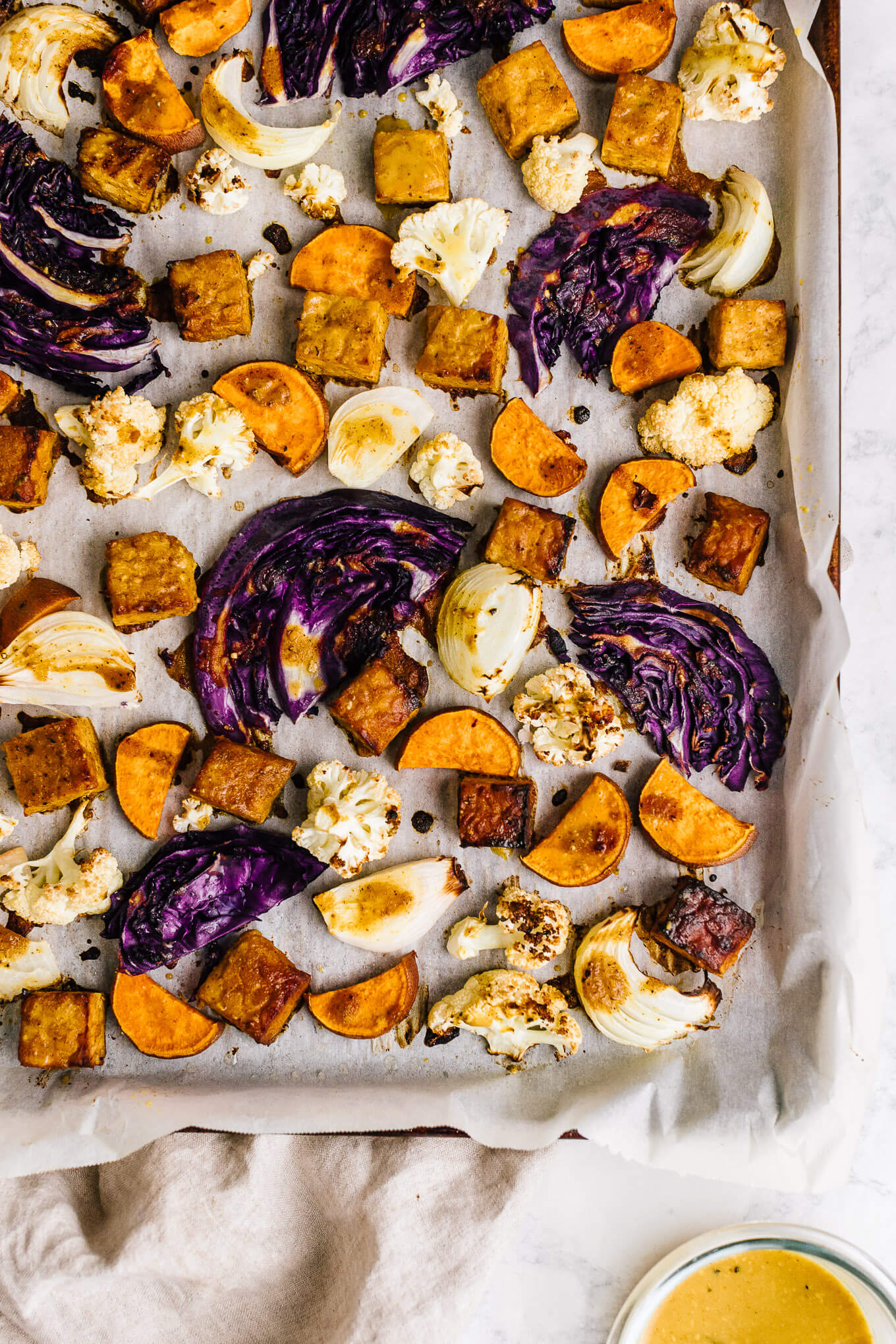
Is there anything better than a one-pan meal? You can quickly toss everything on a sheet-pan, stick it in the oven and have yourself a satisfying dinner or meal prep for the week without too much effort. Plus, sheet pan dinners make cleanup a breeze. A saving-grave for a busy weeknight!
Sheet Pan Honey Mustard Tempeh and Vegetables
This healthy sheet pan dinner is packed with antioxidants and fiber-rich vegetables and plant-based protein. The sweet and savory honey-mustard glaze takes it to the next level. First, the tempeh gets marinated in the sweet and tangy honey-mustard sauce soaking up all of the flavors. Then the leftover sauce gets drizzled over the veggies. I highly recommend doubling the honey-mustard sauce so you have more to drizzle on the final dish and to use throughout the week!
This one-pan vegan dinner is a dream for busy weeknights. Plus, it’s great for meal prep! You can serve as-is for a veggie-heavy, protein-packed entree or serve over quinoa for additional protein and carbohydrates.
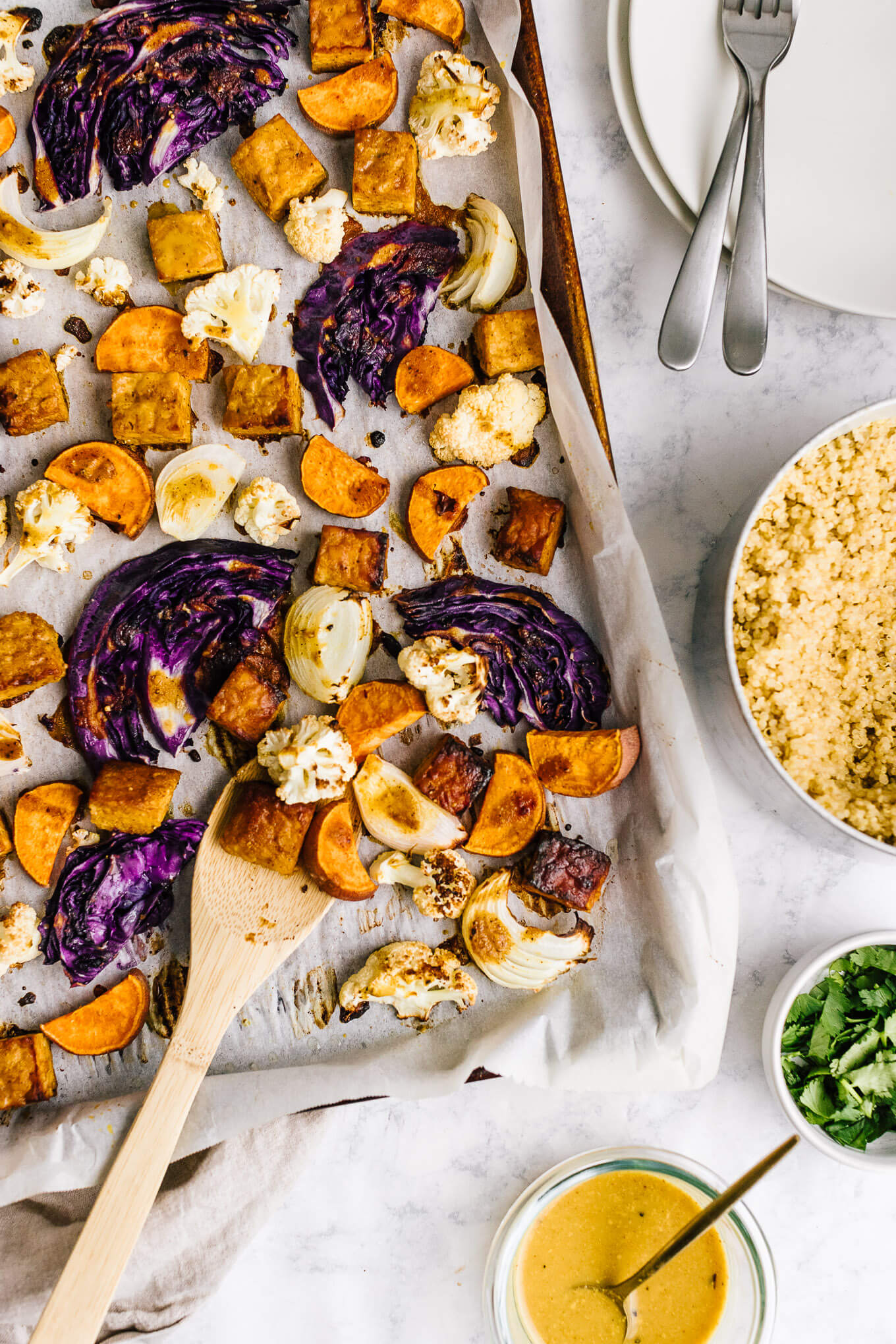
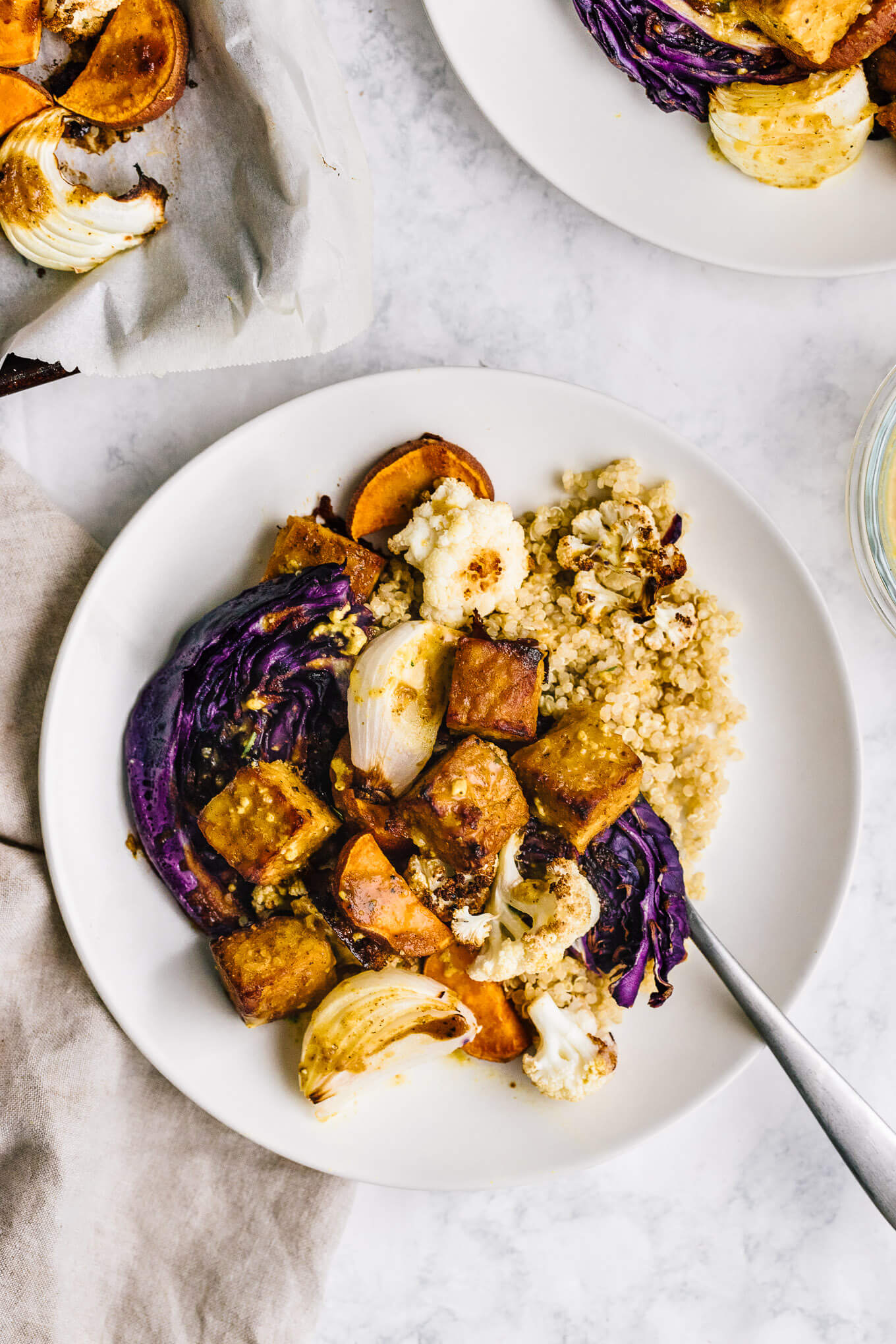
A recent poll in my Instagram stories told me that a lot of you we’re cooking with tempeh. When I asked why you didn’t cook with it, the most common responses were you didn’t know how to use it or that it seemed highly processed. It’s about time we change that!
What is Tempeh?
Tempeh is simply fermented soybeans pressed into a compact block. It’s one of the best sources of plant-based protein and a staple in many vegan and vegetarian diets. Unlike tofu, tempeh has a firm, meaty texture and a slighly nutty flavor. It’s extremely versatile and can easily absorb the flavors of marinades or sauces.
While tempeh may look highly processed, it’s actually one of the least processed forms of soy available. It’s as close to soybeans or edamame as you can get! The fermentation process causes the soybeans to stick together and it’s then packaged in a block for convenience and shelf-stability. The added bonus of the fermentation process is that it adds probiotics and reduces the phytates that can block nutrient absorption.
While tempeh is traditionally made of soybeans, it’s important to note that it may also be made from other beans, grains, and seeds. If you have a gluten allergy make sure to read the label to make sure you’re buying tempeh that’s wheat-free.
How to Cook Tempeh?
For the best tempeh, I recommend steaming it before you do anything! This helps the tempeh become more porous and soak up any flavors of the dish you’re making or a marinade.
To steam, start by cutting the tempeh into 1-inch cubes. You can stem on the stove by placing a steamer basket over 1-2 inches of boiling water. Place tempeh in the basket for 10 minutes. For a quicker method, use the microwave. Wrap the block of tempeh in a damp paper towel and cook on high for 2 minutes. Then proceed to cut into 1-inch cubes.
Once your tempeh is steamed, you can marinate it for the most flavor and bake it. Otherwise, you can simply add it to dishes that already have a sauce or dressing. Simply adding it to pasta sauce, stir-fries or salads and grain bowls with a flavorful sauce.
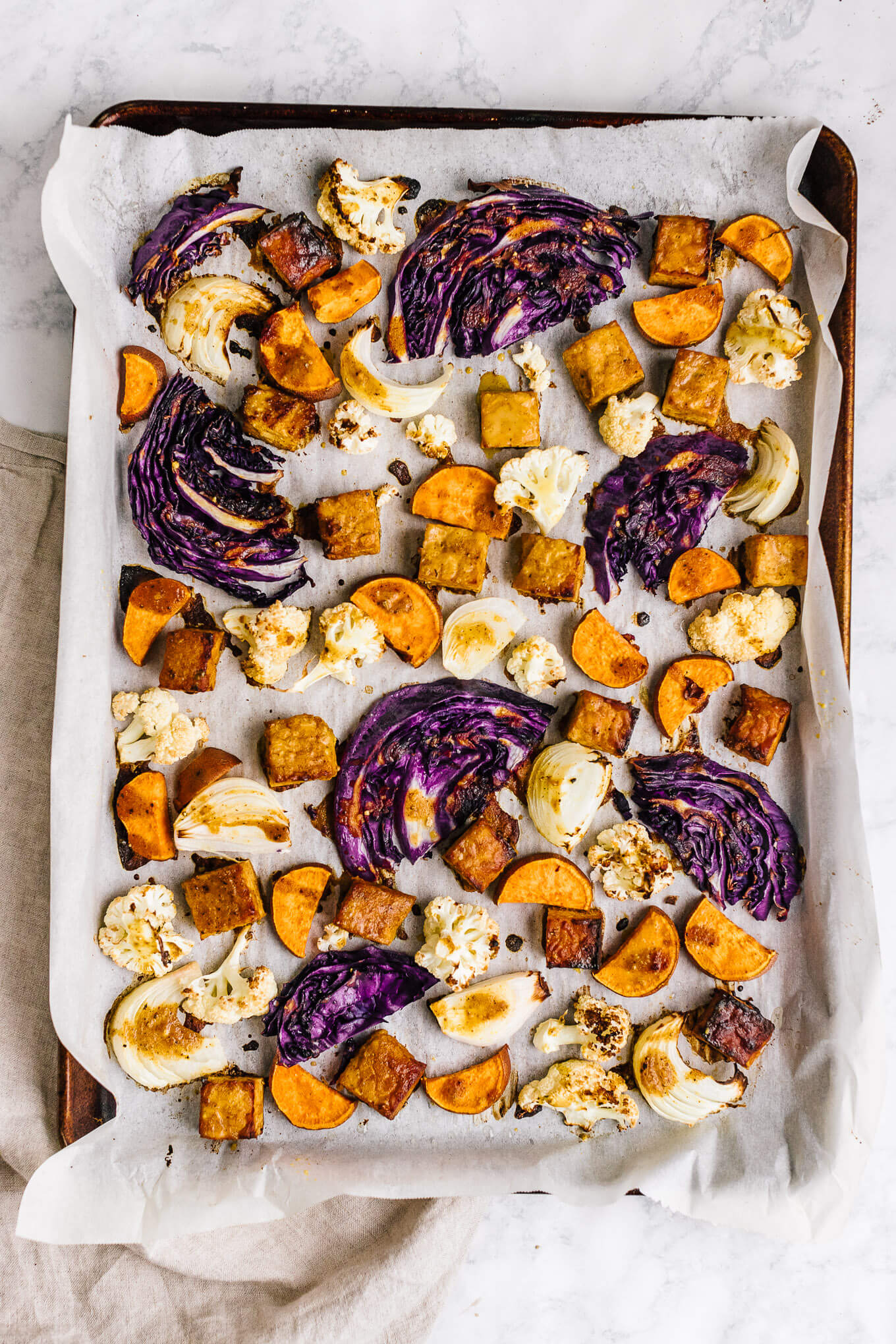
Nourished by Nutrition Facts
Tempeh
Tempeh is one of the best sources of plant-based protein with about 20g per 4 oz. It’s also fermented making it a natural source of pre- and probiotics. Tempeh is also a good source of iron, manganese, phosphorus, magnesium, and calcium and has many nutritional benefits. However, I definitely feel like this topic deserves an entire post. (Nutrition Benefits of Tempeh post coming soon!)
When choosing tempeh, opt for organic tempeh since soy is one of the most GMO crops and heavily treated with pesticides. I should also note, there’s so much controversy around soy (stay tuned for an entire post on this topic also!) but in general, it shouldn’t be feared. That being said, if you struggle with hormone issues, thyroid issues or have a history of breast cancer it may be best to minimize or eliminate soy from your diet (at least of a little while) or talk with your doctor or a registered dietitian to see if soy is right for you.
Fiber
If you’ve been around here for a while, you know I’m a huge fan of fiber. Fiber is essential for a healthy gut microbiome and optimal digestion. Fiber is only found in plant-based foods, which is even more of a reason to adopt a plant-based diet as the foundation of how you eat. The fiber here comes mainly from the purple cabbage, sweet potatoes, cauliflower, and onions. However, since tempeh is just fermented soybeans it also contains fiber.
Antioxidants
Purple cabbage might be one of the most underrated vegetables. But it’s truly a nutrition powerhouse! The electric purple hue not only makes for a unique pop of color to any meal but also packs in the antioxidants. Purple cabbage contains ___
In addition to the showstopping purple cabbage, the other vegetables all contain unique antioxidants. Sweet potatoes contain. Cauliflower is a great source of __ and onions are rich in ___.
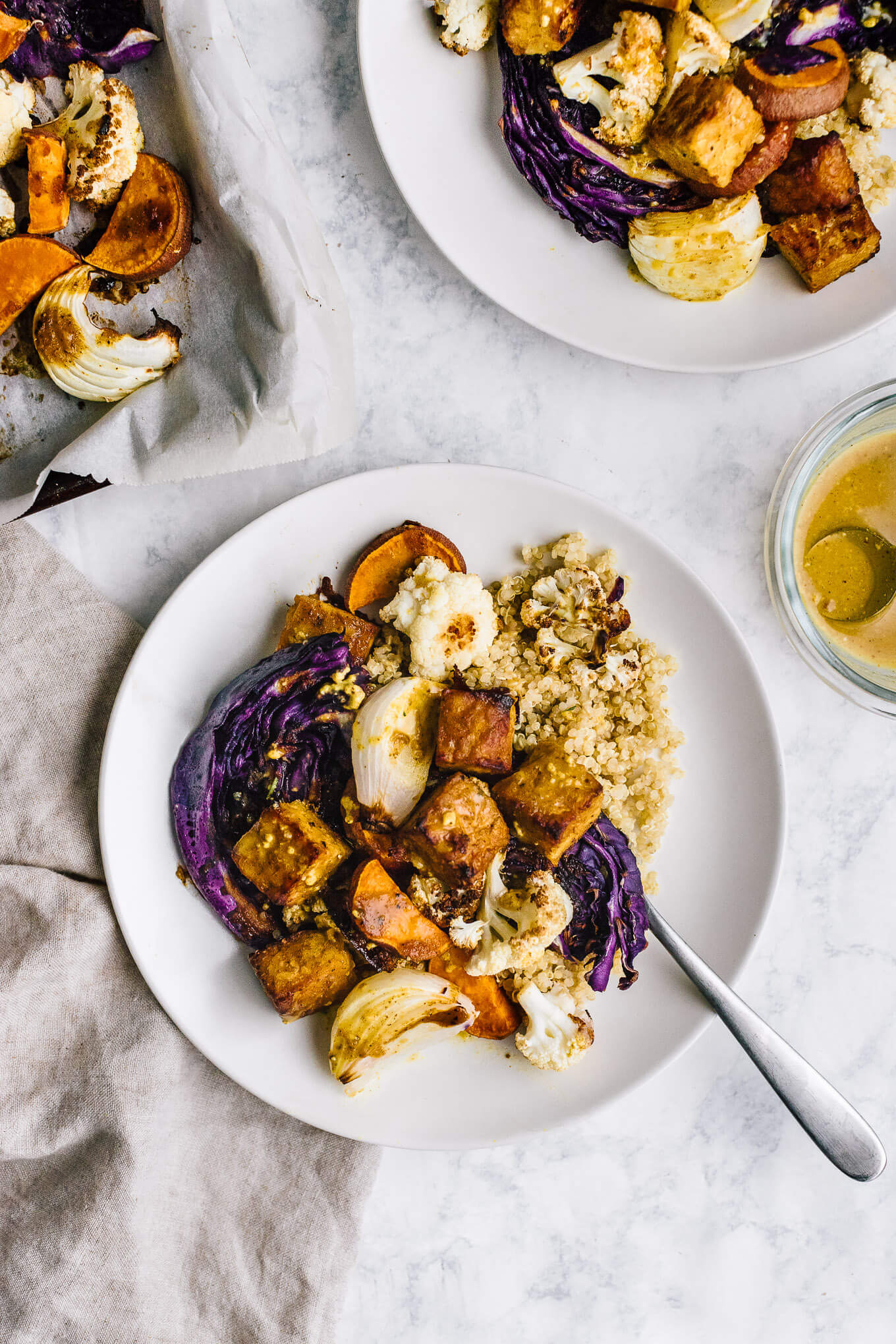
IF YOU LOVE this Tempeh recipe, YOU’LL ALSO Enjoy…
-
- 10 Best Sources of Plant-Based Protein
- Roasted Vegetable Frittata
- Kimchi Brown Rice Bowls with Tempeh – Love and Lemons
- Tempeh Bacon – Simple Veganista
- How To Use Leftover Roasted Vegetables – Cooking Light
Sheet Pan Honey Mustard Tempeh and Vegetables
Easy sheet pan honey mustard tempeh and vegetables. This one-pan plant-based meal is high protein and perfect for meal prep. Use any vegetables you have on hand, just make sure they’re cut the same size. Baby potatoes, carrots, brussels sprouts and eggplant would delicious!
- Prep Time: 15
- Cook Time: 25
- Total Time: 40 minutes
- Yield: 2-3 1x
Ingredients
8 oz tempeh
8 oz sweet potatoes, cut into 1-inch cubes
2 cups cauliflower florets
½ small purple cabbage, cut into wedges
½ small sweet yellow onion or shallots, cut into wedges
2 tablespoons honey (maple syrup)
2 tablespoons hot water
1/4 cup Dijon mustard
2 tablespoon apple cider vinegar
1 tablespoon avocado oil, divided
1 tablespoon tamari
½ teaspoon minced garlic
1/4 teaspoon freshly ground black pepper
Instructions
Preheat the oven to 400F. Line a large sheet pan with parchment paper or a reusable silicone mat.
Steam the tempeh (optional but recommended): Wrap the block of tempeh in a damp paper towel. Place in the microwave of 2 minutes to steam. Once cool enough to handle, cut the tempeh into ½-inch cubes. For the stovetop method, cut the tempeh into ½-inch cubes. Bring a small pot with 2 inches of water to a boil. Place the tempeh in a steamer basket or metal colander over the pot. Cover the basket or colander with a lid and let steam for 10 minutes.
Meanwhile, make the honey mustard sauce. In a small bowl, dissolve the honey (maple syrup) in the hot water. Add the Dijon, apple cider vinegar, tamari, garlic, and black pepper. Place the steamed tempeh in a shallow dish; cover with the sauce. Let sit for 10-20 minutes while you prepare the vegetables.
Place the prepared vegetables on the sheet pan. If you find that the sheet pan is too crowded split the vegetables between two sheet pans. Add the tempeh to the sheet pan and spray the vegetables and tempeh with avocado oil to lightly coat (about 1-2 tablespoons). Using a spoon or basting brush, drizzle or brush 2-4 tablespoons of the honey mustard sauce onto the vegetables and tempeh Place in the oven for 25-30 minutes. For extra crispy vegetables, remove from the oven after 15 minutes and carefully flip the veggies and tempeh, then place back in the oven for the remaining 10-15 minutes. The vegetables are done when the golden brown and the potatoes are tender.
Serve warm with an additional drizzle of honey mustard sauce. You can also serve over grains like rice or quinoa. Leftovers can be stored in an airtight container in the refrigerator for up to 5 days.
Notes
To make this recipe fully vegan, use maple syrup instead of honey.
You may consider doubling the sauce, it’s that good! You’ll love having the extra to drizzle over the finsihed meal or to use various ways throghout the week.
DID YOU MAKE THIS RECIPE?
I’d love to hear how it turned out for you! Leave a comment below and share a picture on Instagram with the hashtag #nourishedbynutriton.

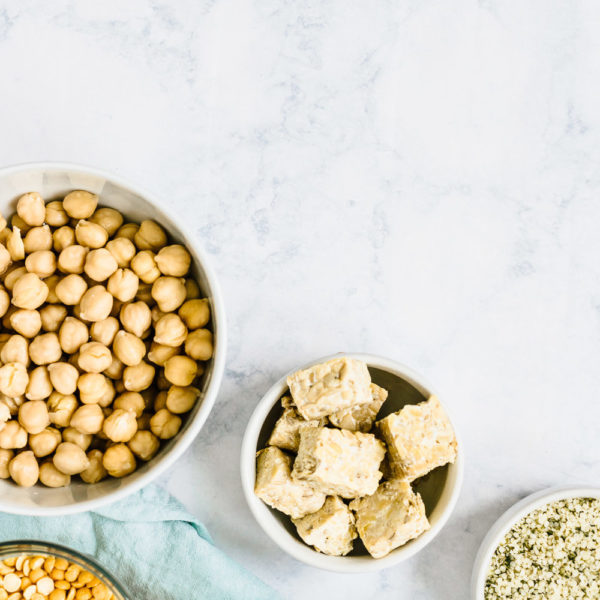
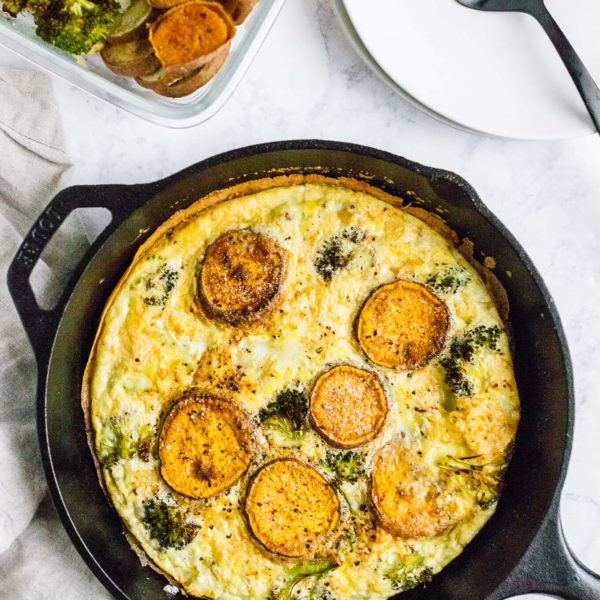
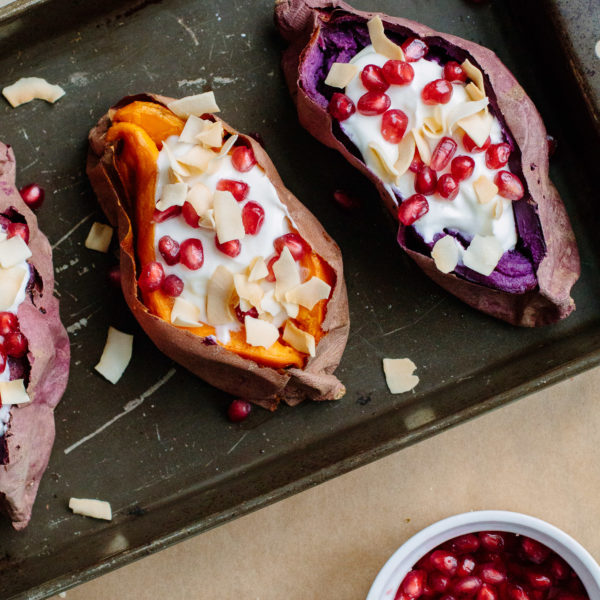
This was really good. I used a variety of vegetables that I had including some broccoli. I made the dressing with maple syrup, and I’m going to use it all the time. It’s the best “honey” mustard recipe that I’ve tried. Good idea steaming the tempeh in the microwave too, although I just put a little water in the bottom of the bowl with a plate on top and skipped the paper towel.